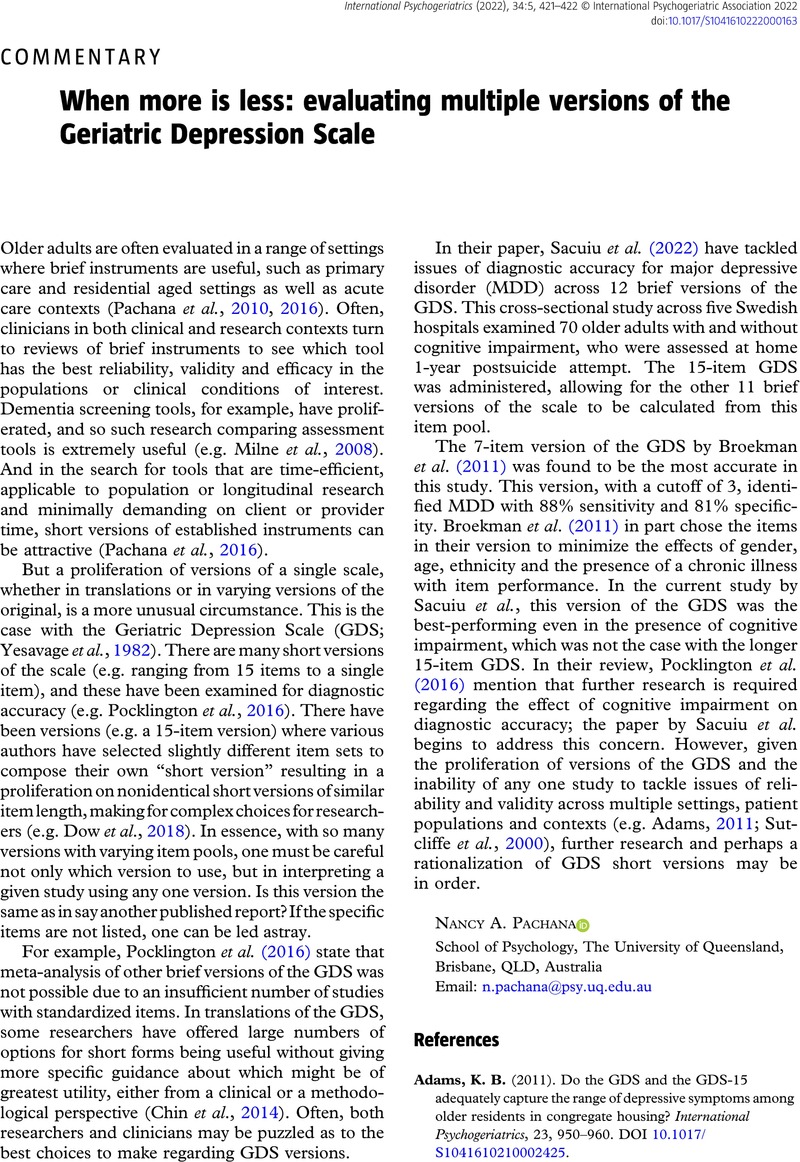Crossref Citations
This article has been cited by the following publications. This list is generated based on data provided by Crossref.
BANDO, Hiroshi
HAYASHI, Kenji
SUMITOMO, Kyoko
MIKI, Kazuya
and
KAMOTO, Asami
2022.
Rapid Reduction of HbA1c and Weight in Elderly Patient with Type 2 Diabetes (T2D) And Depression by Oral Semaglutide (Rybelsus).
Asploro Journal of Biomedical and Clinical Case Reports,
Vol. 5,
Issue. 2,
p.
73.
Ruiz-Sancho, Elena
Román, Francisco J.
Torices, Lucia
Sánchez-Escamilla, Francisco
Aguirre, Andrea
Rubio, Enrique
Cañada, Patricia
Rodríguez, Natalia
León, Leticia
Pérez-Nieto, Miguel Ángel
and
Redondo-Delgado, Marta
2025.
Design and validation of the CADIS-G: a screening instrument for anxiety, depression, loneliness and anger in the older population.
Frontiers in Psychiatry,
Vol. 16,
Issue. ,


